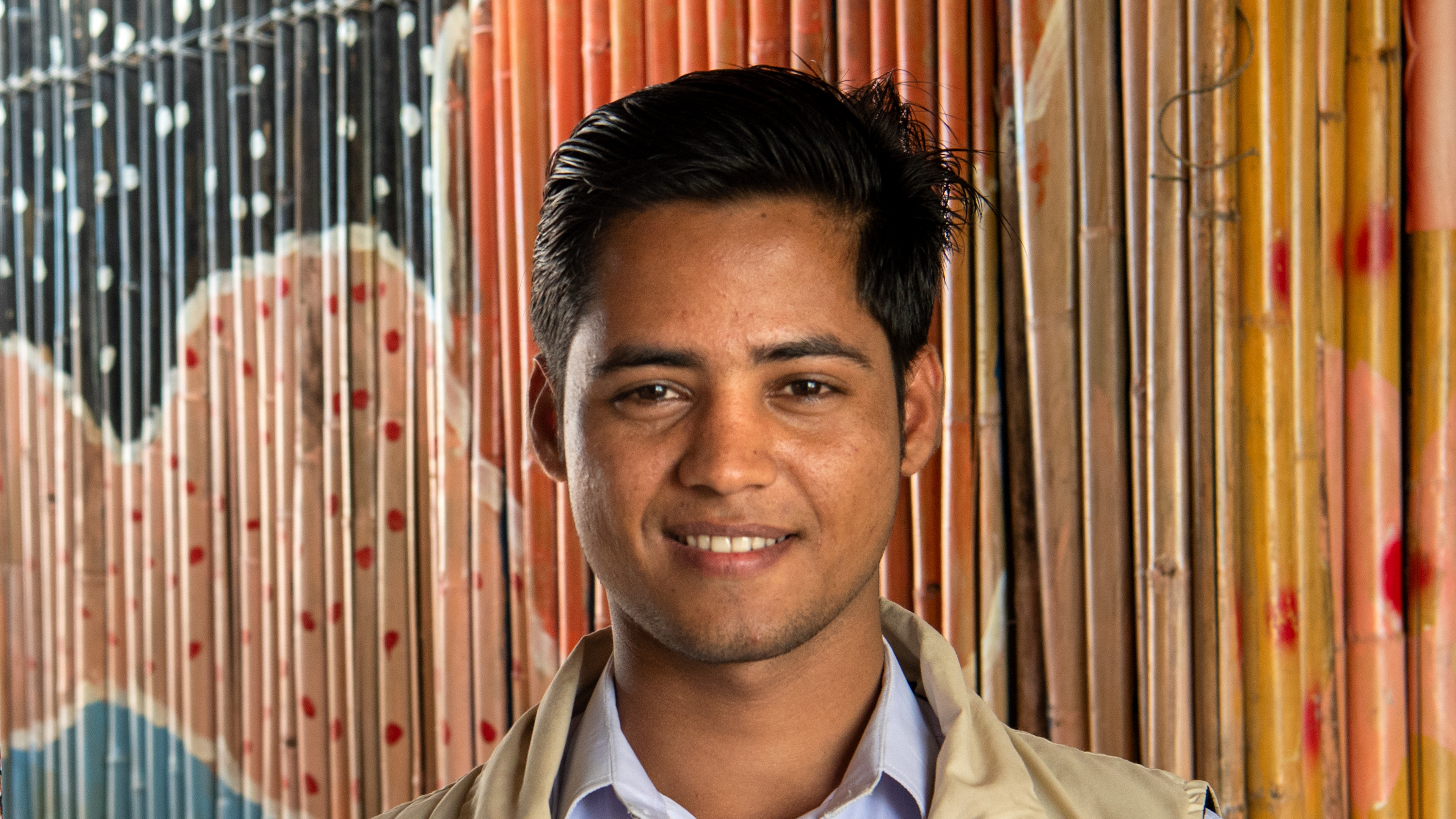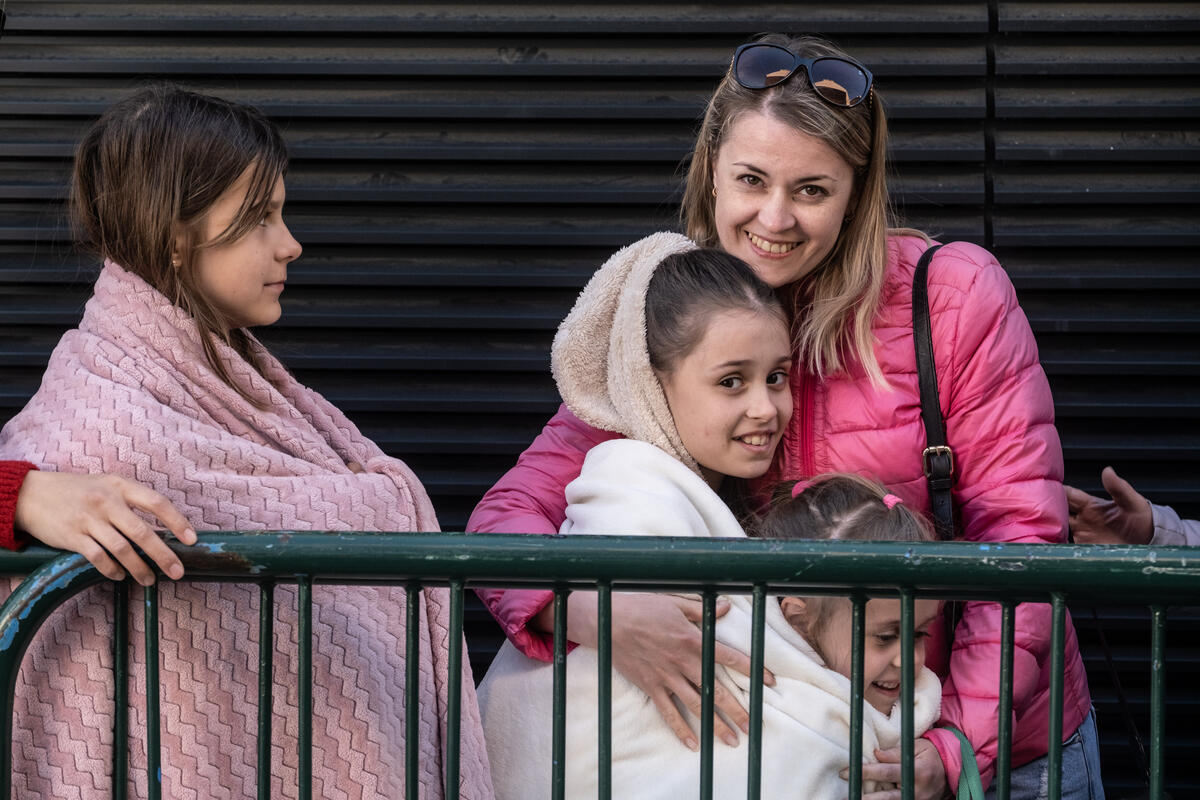Rohingya and Bangladeshi teachers pair up to tackle education hurdles in camps
For as long as he can remember, Shah Alum’s dream was to become a teacher. But his education ended abruptly when he was forced to flee his native Myanmar before he could graduate from high school.
Across the border in Bangladesh, he and his family found safety in one of the camps that was springing up in Cox’s Bazar, but there was no opportunity for Shah to complete high school, let alone attend university.
And yet, nearly five years later, Shah, now 22, is leading a class of about 40 Rohingya children seated on the floor of a bamboo-framed classroom in Kutupalong camp, home to some 750,000 Rohingya refugees.
While Shah teaches the children the Myanmar language at the front of the class, Minhar Begum, a 24-year-old from the Bangladeshi community in Cox’s Bazar District, moves around the room making sure everyone is following her colleague’s instructions.
"When we teach together, it's easy to coordinate the class."
Shah and Minhar have been working together as teaching assistants at this learning centre for the past two years. While neither of them is a fully qualified teacher, they have received training from UNHCR, the UN Refugee Agency, and between them, they cover an informal curriculum that consists mainly of basic literacy and numeracy, as well as some Myanmar language and life skills.
“When we teach together, it’s easy to coordinate the class,” says Shah. “She can be at the front, maybe explaining something, and I can be at the back. We can focus on every student equally.”
The decision to pair Rohingya refugees with local Bangladeshis to teach at 5,600 learning centres throughout the camps in Cox’s Bazar arose out of necessity, explains Haruno Nakashiba, Senior Protection Coordinator with UNHCR.
“We have a shortage of teachers among the refugees because very few Rohingya were able to complete higher education in Myanmar, due to restrictions on their movements and other rights,” she says. “So, for some of the subjects, like English or Mathematics, we decided to hire Bangladeshi teachers. This also means we’re creating jobs for them.”
With the Rohingya largely confined to the camps, these teaching partnerships have the added benefit of providing one of the few opportunities for refugees and local Bangladeshis to come together.
“We are like siblings, we understand each other very well,” says Shah about his relationship with Minhar. “At first, we didn’t communicate much, but now we talk about strengths and weaknesses and how we can improve.”

Even with one another’s support, teaching at the learning centres is not without its challenges. The informal curriculum was developed following the 2017 influx of Rohingya into Bangladesh as an emergency measure to ensure children learned some literacy and numeracy. It is no substitute for a formal, standardized education and its four levels cater only to younger children aged 4 to 14, leaving a critical gap in education for older children.
“When I’m talking about the challenges for the children, it’s the same for me as well,” says Shah. “There’s no proper pathway for education here … After passing Level 2, many students don’t want to come back because of the lack of certification.”
He says that many primary-aged children in the camps are not going to learning centres, with attendance even lower during the monsoon season when paths in the camps can become muddy and treacherous. “Some work to help their parents; others spend their days doing nothing.”
Haruno Nakashiba of UNHCR said the agency has long raised concerns about the lack of any formal education in the camps and, together with UNICEF and other partners, advocated for replacing the current system with Myanmar’s national curriculum. The Bangladeshi government approved a shift to the Myanmar curriculum in January 2020, but the COVID-19 pandemic closed learning centres and delayed its roll out for nearly two years.
A pilot of the new curriculum finally began late last year with an initial 10,000 children in grades six to nine enrolled. A second phase of the roll out for grades one and two will start in July, at the start of the new school year, with the remaining grades due to be replaced next year so that all school-age children in the camps will be following the Myanmar curriculum by July 2023.
"We want the Myanmar curriculum."
Without certification issued by Myanmar’s Ministry of Education, the new syllabus still cannot be considered a formal education, but Haruno describes it as vital for the vast majority of Rohingya refugees who wish to return home to Myanmar when it is safe to do so.
“Refugees say they want to prove they belong to Myanmar. They say, ‘When my children learn to read and write in Burmese, my children will be recognized as belonging there’.”
Shah gives similar reasons for his impatience to start teaching the new curriculum as soon as possible. “We want the Myanmar curriculum so children can continue their learning when they go back to their country,” he says.
Minhar agrees, even if it means that her partnership with Shah could soon come to an end. Although some Rohingya and Bangladeshi teachers will continue to work in pairs, Rohingya teachers will receive training to teach most subjects in the Myanmar language, while host community teachers like Minhar will focus on teaching English and helping with training.
Shah’s dream of one day becoming a qualified teacher is not as impossible as it once seemed. UNHCR began offering teacher training to 2,500 teachers this year, the majority of them Rohingya.
“If I get the opportunity to learn anywhere, I will go for it,” says Shah. “I want higher education.”










